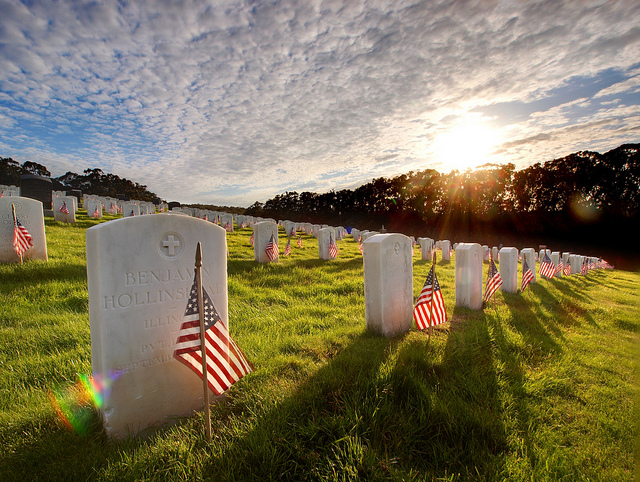
Lest ye forget, as you prepare your grills and marinate your meats for the weekend, Memorial Day was not always the summer food holiday it has become.
As opposed to Veterans Day, which honors living veterans, Memorial Day is a time to remember those who have died while in military service. The holiday originally started as Decoration Day, where the graves of soldiers were decorated with flowers and flags. Though President Lyndon Johnson declared Waterloo, NY the official birthplace of Memorial Day the wake of the Civil War, dozens of towns continue to claim that they, in fact, were the originators of the holiday.
It's ancestry is so hard to trace -- particularly through to some of our current iterations -- because the custom of decorating tombstones precedes organized holidays. What is certain is that on May 5, 1868 national commander General John Logan declared May 30 Decoration Day, "designated for the purpose of strewing with flowers, or otherwise decorating the graves of comrades who died in defense of their country during the late rebellion, and whose bodies now lie in almost every city, village and hamlet churchyard in the land."
At the first ceremony at Arlington National Cemetery, 5,000 people participated in decorating the graves of fallen soldiers from the Civil War. By the late 1800s, all the northern states recognized Decoration Day. It wasn't until after World War I, when the holiday changed from recognizing Civil War soldiers to honoring all dead military, that the whole of the country participated on May 30 every year.
According to the U.S. Department of Veterans Affairs, it is believed that date was chosen because flowers would be blooming across the country and would make wreaths with which to decorate the graves of fallen soldiers. And, so, for decades Memorial Day on May 30 was simply a day of memorial and remembrance.